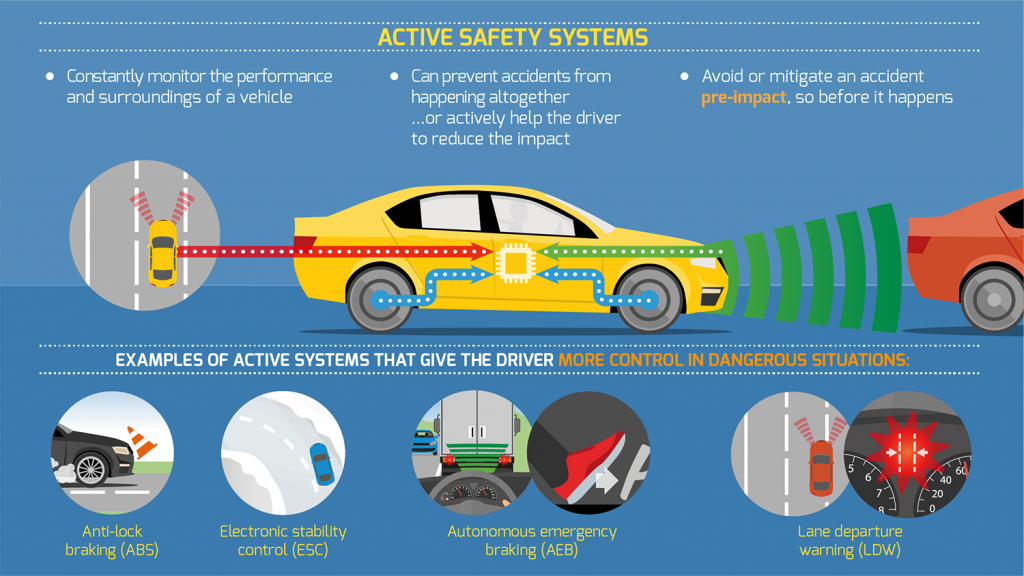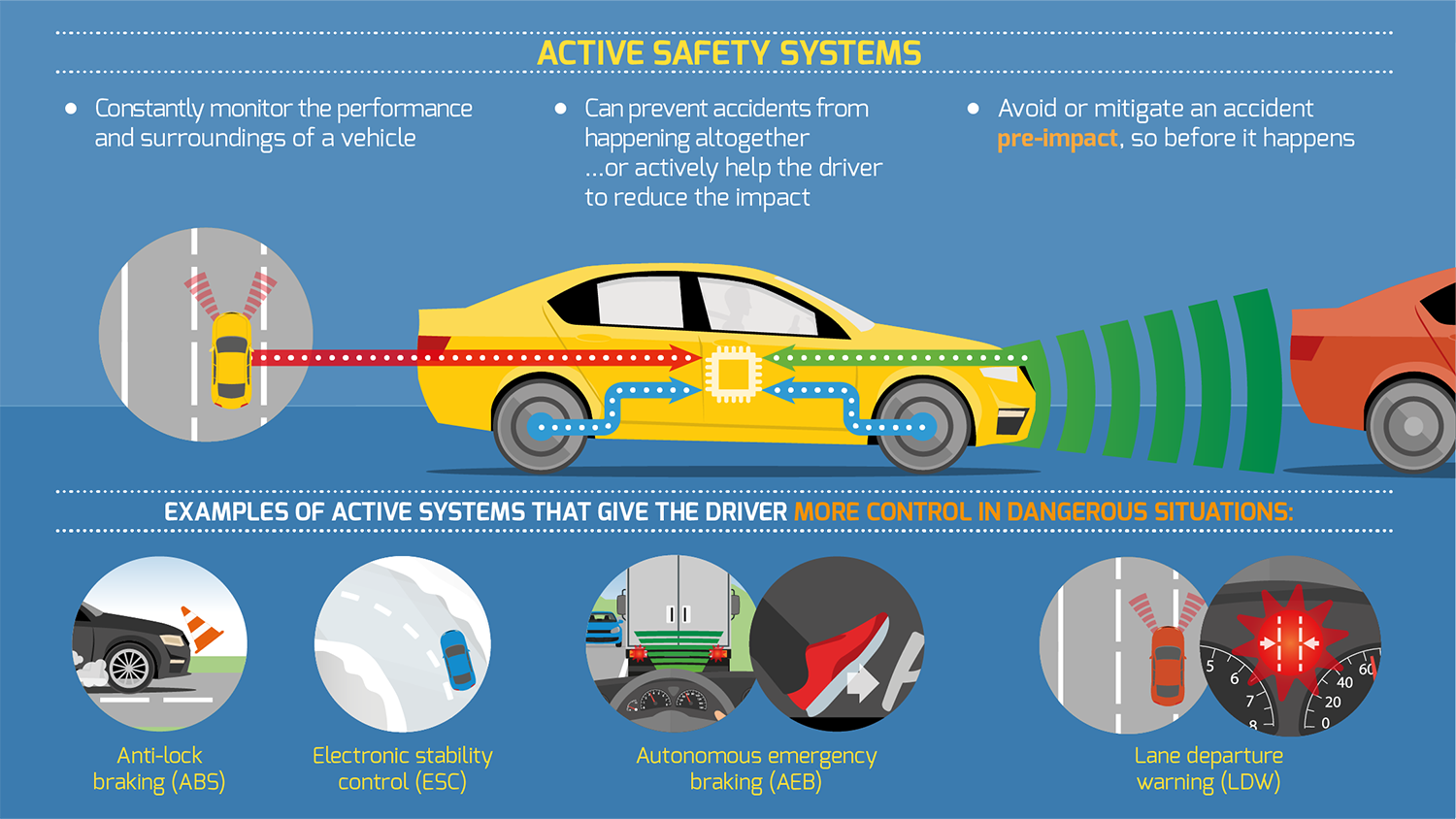No matter if you are seeing an expensive car or a bargain, the safety of your purchase ought to be foremost in your mind as you are assessing the vehicle. Price, comfort and fuel consumption are often the first things that come to mind, but if you want to arrive at your destination safely, shouldn’t the vehicle’s safety systems be just as important?
A recent public opinion survey conducted by transport Canada indicated that Canadians consider airbags, seat belts and anti-lock brake systems as the three most recognized and required safety features in today’s vehicles. Most later model vehicles also have a number of other features that protect passengers in the event of a crash or even help avoid a crash altogether. Here are features that you should look for when considering the purchase of a vehicle.

Airbags
Particularly in frontal crashes, airbags are essential in helping prevent injuries and death. These devices, which deploy within a fraction of a second after a serious collision provide protection beyond seatbelts when the heads and chest of passengers can move forward and strike the steering wheel, windshield and dashboard in the front of the car. Later model vehicles also incorporate side curtain airbags that deploy during side impacts and rollovers to provide buffers between occupants and the vehicle structure.
Seat Belts
Standard equipment since the 1960s, seatbelts are the first line of defense in preventing injury. In fact, not using seatbelts can render airbags ineffective in a serious crash. Over the years, seatbelts have evolved to become more comfortable and offer more safety as adjustable upper belts allow you to change the device’s position to accommodate an individual’s size. Other improvements include pretensioners that retract to remove excess slack and load limiters that prevent shoulder belts from concentrating too much energy on the chests of passengers during a crash.
Anti-Lock Brakes
Anti-lock brake systems (ABS), prevent wheels from locking during panic braking to allow greater steering control, but they do not prevent a crash. Some ABS’s include brake assist that senses emergency braking by detecting the force with which driver press brake pedals, thereby activating ABS more quickly.
Traction and Electronic Stability Control
Often working hand-in-hand, these two features help stabilize vehicles. Traction control Limits the amount wheels can slip when applying excess power. Electronic stability control assists drivers during extreme steering maneuvers, sensing and correcting over-steering or under-steering.



